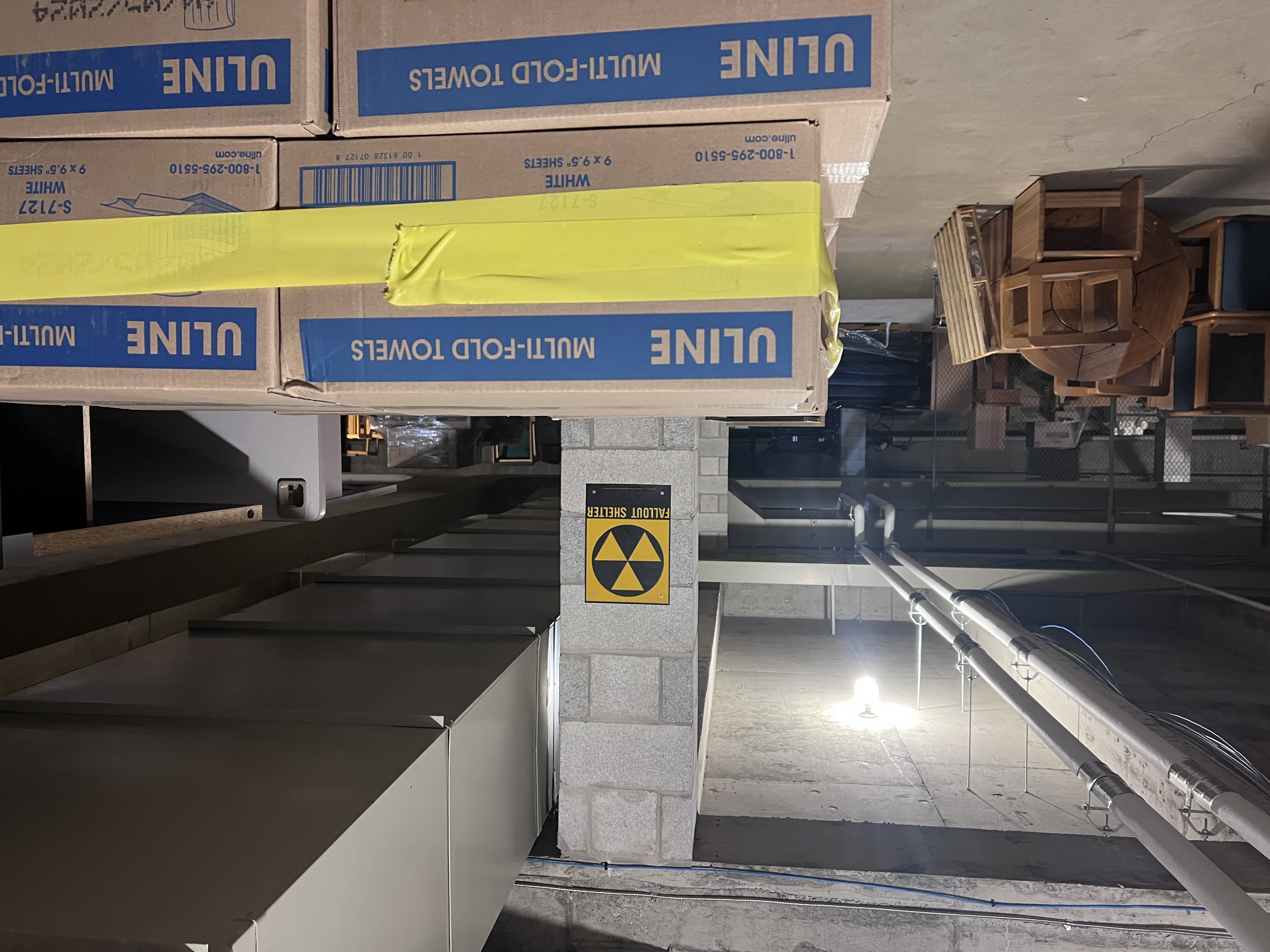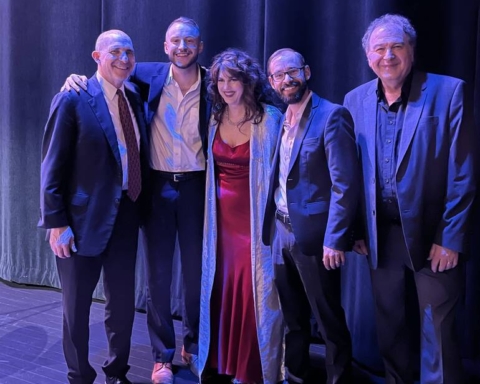Photo of fallout shelter
Photo courtesy of David Scibilia
BY DAVID SCIBILIA, MANAGING EDITOR
Rev. Francis Kearney, the 14th president of St. Bonaventure University, walked into his office in mid-November of 1961 — just three months since assuming the position — and saw a pamphlet on his desk. It was from The State Education Department, the Division of Law. He read the only words on the cover other than the return address: “FALLOUT SHELTERS.”
The New York State Legislature had amended the State Defense Emergency Act to allow government funding to be used for the construction, installation and maintenance of nuclear fallout shelters in university buildings, according to section II of the pamphlet.
That was all Kearney heard until Oct. 30, 1962. Instead of a pamphlet, this time Kearney received a memorandum from James E. Allen Jr., New York State’s commissioner of education.
“I am sure the events of the past week have sharpened our awareness of the hazards we face, and imparted a sense of urgency to the need for making every possible preparation for protecting the boys and girls whose education and care in school are our responsibility,” Allen wrote.
The “event of the past week,” we know today as the Cuban Missile Crisis, lasted from Oct. 16 to Oct. 29, 1962, according to the John F. Kennedy Presidential Library and Museum. Although Kearny received the letter on the 30th, it was postmarked on the 26th.
In a May 1962 letter from the Cattaraugus County Civil Defense Office, four on-campus locations were listed for possible fallout shelters. University archive records only provided proof of two being built — a 130-foot long by 70-foot wide, concrete and cinderblock enclosed space in the basement of Doyle Hall and another in De La Roche Hall. Other than a single mention of its existence in this letter, nothing else is known about the De La Roche shelter.
“In the 1960s, Doyle was still a friar dormitory,” Dennis Frank, university archivist said. “[The basement is] a very big, underground and well-protected room. But because it was home to the friars when the university responded to the request, they made some notes about restrictions.”
A July 1962 letter from the university to the defense office explained the Friary was only open to the 70 friars living on campus. In order to comply with Franciscan Canon Law, the university requested that no drills or practice raids occur that would involve entering the building, women could not be assigned to inspect the shelter and the use of the building was restricted to only the basement.
The government complied and in November the university received schematics of the shelter to be built in Doyle. Two months later, the defense office sent representatives from the United States Army Corp of Engineers to hang the fallout shelter signs and stock enough water containers, containers with crackers or biscuits, medical supplies, sanitation supplies and radiation monitoring supplies for 248 people, according to a January 1963 letter.
Sixty-one years later, the shelters look much different.
“All the food and supplies used to be on these big metal racks,” said Frank. “But now they’re used for library storage and other university storage.”
Behind the anti-climatic nuclear warnings nailed to the wall next to the heavy, metal doors lie pallets stacked to the ceiling of paper towels, extra chairs, pallets of toilet paper, tables and even art.
“The painting of the Devereux couple next to St. Nicholas, we found rolled up in the shelter,” said Frank. “It was in pretty rough shape, but we had some major restorations of it done.”
“Nicholas and Mary Devereux kneeling in prayer before St. Nicholas,” by Antonio Arieti c. 1870 hung in the Regina A. Quick Center for the Arts for about two years around Bonaveture’s 150 anniversary. The 9.5-foot high by 6.5-foot wide painting has since been properly stored in the arts center’s vault, said Evelyn Penman, the assistant director and curator of The Quick Center.
Other than seven government/university letters, three metal signs and a single golden tin of 419 crackers, nothing more remains of Bonaventure’s nuclear fallout shelters. Their legacy continues to fade as buildings get renovated. All signage for the De La Roche shelter has been removed. Directional signs indicating the shelter location in the Doyle hallways have been removed.
“When Doyle was built, this was a basement,” said Frank. “It was a basement before it was designated a shelter, and now it’s back to a basement. It’s come full circle.”
scibild22@bonaventure.edu









